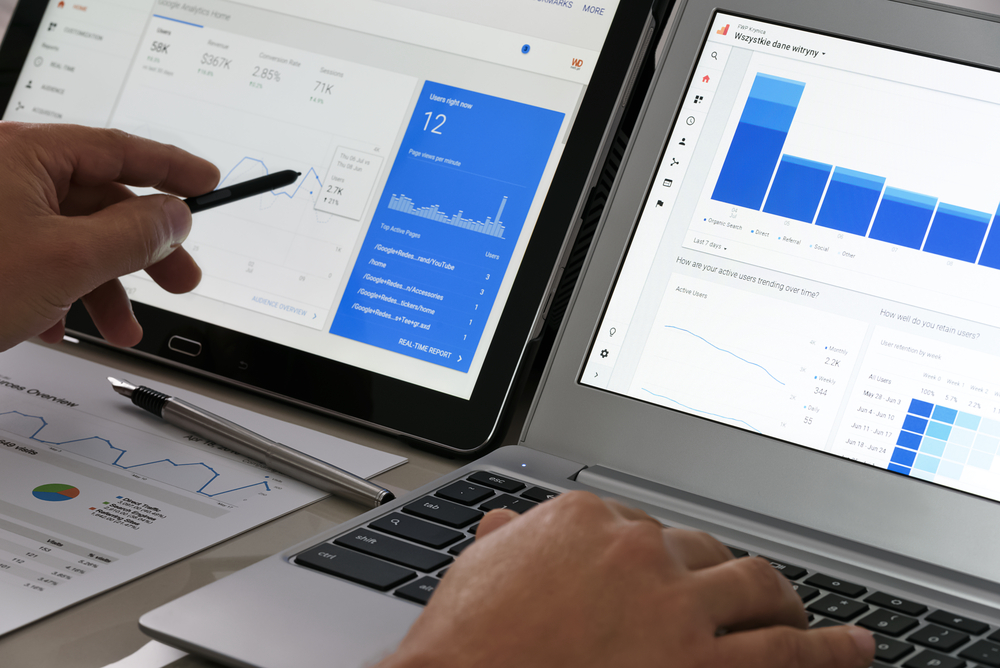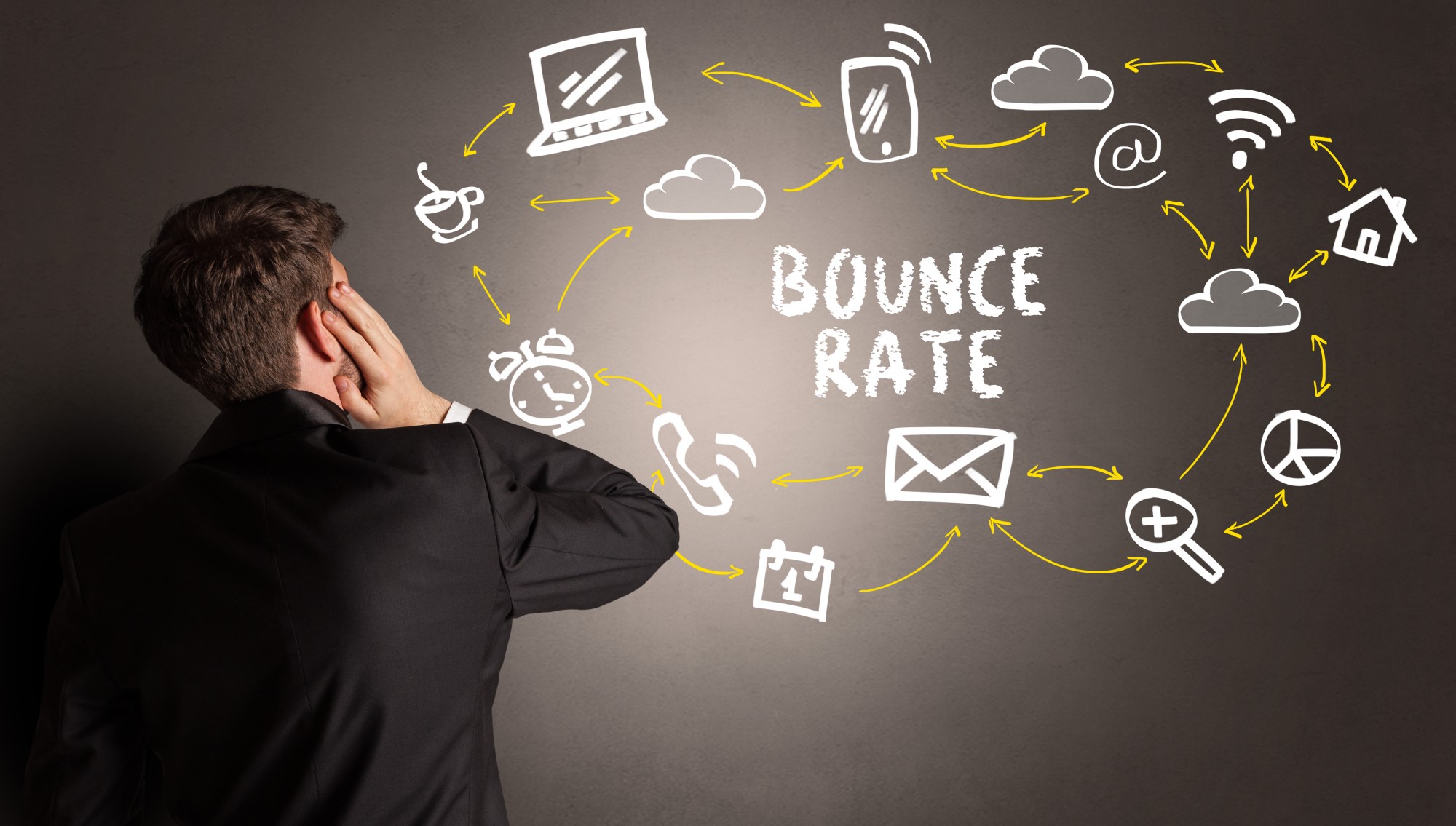What is bounce rate and what does it mean for SEO?
Castle’s Head of SEO Rachel Walton explores one of the most important but most commonly misunderstood concepts in website optimisation: bounce rate.
What is bounce rate in SEO? SEO is one of the fundamental digital marketing strategies that all businesses can benefit from. However, it comes with a lot of technical terminologies that may be hard for those new to the topic to follow.
In this post, I’ll be explaining the concept of bounce rate. This is one of the most important concepts in SEO, especially when it comes to assessing the success of an SEO campaign. However, it can also be misleading. It can actually be very easy to draw the wrong conclusions from your site’s bounce rate.
To help you make the most of this important metric, I’ll explain how bounce rate is assessed, and how it relates to other ways of evaluating SEO performance.
What is SEO?
First, though, let’s start with the basics. SEO stands for search engine optimisation, and it essentially refers to the practice of making sure that your website is useful to crawlers.
Crawlers are bots (automated computer programs) that search engines like Google use to navigate websites and gather information about them. This information is then used to decide which sites should appear when a user searches for a particular word or phrase – and what order they should appear in.
That is to say, the information that crawlers provide is used to determine search engine rankings.
As you can imagine, the more useful your website appears to these crawlers, the higher your website will rank on Google, Bing, and all other search engines.

What different KPIs can you use for SEO?
When you’re optimising web pages for clients, there are a number of significant metrics that can be used to determine how successful your optimisation strategies have been. These are your key performance indicators or KPIs.
For SEO, you have two main types of metrics. These are generally categorised as leading metrics and lagging metrics.
Leading metrics are things that SEOs can directly impact. These are things like impressions and ranking positions – how many people visit the site, and how high it ranks on a search engine for specific words or phrases.
These are all things that, through optimisation, you can control. Using SEO strategies, you can ensure that your site will rank higher and that it will be seen by more people.
Lagging metrics, on the other hand, are things like traffic and conversions. These are things that clients tend to be more interested in, but that SEOs, unfortunately, have less control over, especially in the initial stages.
As the names imply, SEO will impact your leading metrics first, and then subsequently show an effect on your lagging metrics.
In most cases, you’ll find that your leading metrics, such as impressions and rankings, start to improve at the beginning of a campaign, in the first few months.
Then, as time goes on, you’ll notice this start to have a domino effect on your traffic and eventually your conversions. Your lead generation and your conversions for e-commerce will start to improve as well. So, even though SEO has a more direct and immediate impact on the leading metrics, this will then lead to an improvement in the lagging metrics.

What are the most important KPIs for reporting?
While SEOs tend to work towards the leading metrics, clients tend to be a lot more interested in the lagging metrics, for obvious reasons.
As a result, in the initial stages of a campaign, it’s important to have a focus on the leading metrics, because these metrics will give you a really good indication that the things you’re doing to optimise the website are actually working.
For example, you can tell from the fact that you’re ranking higher for certain terms that your on-page optimisation is a lot better, or your technical SEO is a lot better. You’ve improved the site speed, you’re doing things right, and that’s why Google has rewarded you with those rankings. You can be confident that you’re moving in the right direction.
However, as the campaign develops, the priorities change somewhat. Obviously, the most important thing for the client is, at the end of the day, making money, generating more leads for the business, and progressing further as a business. So, that’s where the lagging metrics become really, really important.
That doesn’t mean it’s all about the leading metrics at this point, though. Even as you begin to emphasise the lagging metrics, it’s important not to lose sight of your leading metrics, and to keep an eye on the immediate effects of the changes you are making.
Ultimately, it is really important to emphasise both leading and lagging metrics, because you can’t get to the lagging metrics without paying attention to the leading metrics.
What is bounce rate in SEO?
With all this in mind, we can now look at one particular metric that is important for SEO campaigns, namely what is bounce rate in SEO?
Bounce rate refers to the percentage of single-page sessions that are measured at zero seconds long. Now, this requires a bit of explaining – how can a session be zero seconds long? Even if someone clicks off your page immediately, surely they’ve still been on the page longer than zero seconds?
Well, the culprit here is how Google Analytics actually measures session duration – that is, how long someone has been on a page.
Essentially, a zero second page session relies on someone not interacting with the page at all. If somebody clicks somewhere on the page, Google Analytics triggers that that person is still there. If they don’t, it has no way of measuring the session duration. If they then leave the page, it defaults to zero.
For example, let’s say you go to a website, spend five minutes there, and then click on something, whether it’s a link or a form to fill out. Google now knows that you’ve been there for five minutes because you arrived there, it’s been five minutes, and you’ve now made an interaction with the page.
But if instead, you simply clicked off the page without interacting with it, that would be registered as a session lasting zero seconds – even though we’re actually there for five minutes!
So, a bounce rate of 40% on a website means that 40% of people arrive on the first page, don’t interact or click through to other pages, and then leave the website. It doesn’t necessarily mean that they’ve literally come and left in less than a second, or that they didn’t spend any time on the page.

What would a good bounce rate be when reporting to a client?
It may seem fairly obvious that, from an SEO perspective, you want a low bounce rate. However, this is not quite as clear cut as it might seem. In fact, what counts as a low bounce rate, and how important it is to achieve this, can depend on the nature of the website in question.
Obviously, if you’re a lead generation site, you’ll want your bounce rate to be really low. That’s because you want people to engage with your website and to fill out a form, and that’s the ultimate goal of the website.
If the bounce rate is high, that tells you lots of people are coming to the site and not actually interacting with it – so it’s not generating as many leads as it could.
On the other hand, if you have a blog where the goal is for people to type an enquiry into Google and for you to answer their question in your blog post, you don’t necessarily need somebody to click on anything or interact with anything. They can just read the post and go. In that case, having a high bounce rate isn’t necessarily a bad thing.
It definitely doesn’t always indicate that there’s a serious issue. After all, as I explained above, bounce rate doesn’t necessarily tell you how long people are staying on the page.
However, for pages that are designed to have people interact with them and for websites where you want people to follow through a customer journey, then it’s obviously really important to lower the bounce rate.

How do you improve bounce rate?
Ultimately, improving your bounce rate is just about making better pages and encouraging interaction. But this is perhaps easier said than done!
For instance, you might want to optimise your on-page content. To do that, you’ll really want to learn from your Google Analytics insights. A simple approach is to go and look at which pages on your site have the highest bounce rate and compare them to ones that have really low bounce rates, and then see what the differences are. Do they have better content? Are the calls to action better? Do they have more opportunities for customers to engage with your website? Is the UX better on that page? Look for any obvious differences that can give you an indication of what needs changing.
Of course, improving your content is always going to be helpful, but you can also optimise the user experience. A great way to do this is using tools like Google Optimise to run A/B tests on different pages of the website. This is a really simple way to perform tests on a webpage to see what effects certain changes will have.
Will changing a button from green to red make more people click on it? Will moving this call to action from the bottom of the page to the top of the page encourage more people to click on it? You can find out how these changes will lower the bounce rate in a little test environment, where you won’t have as much risk.
So, there are plenty of ways that you can optimise to reduce the bounce rate on your page, but mainly you’re looking at improving your calls to action, optimising your content well and just thinking a lot about the user experience and how you can make that less clunky.
